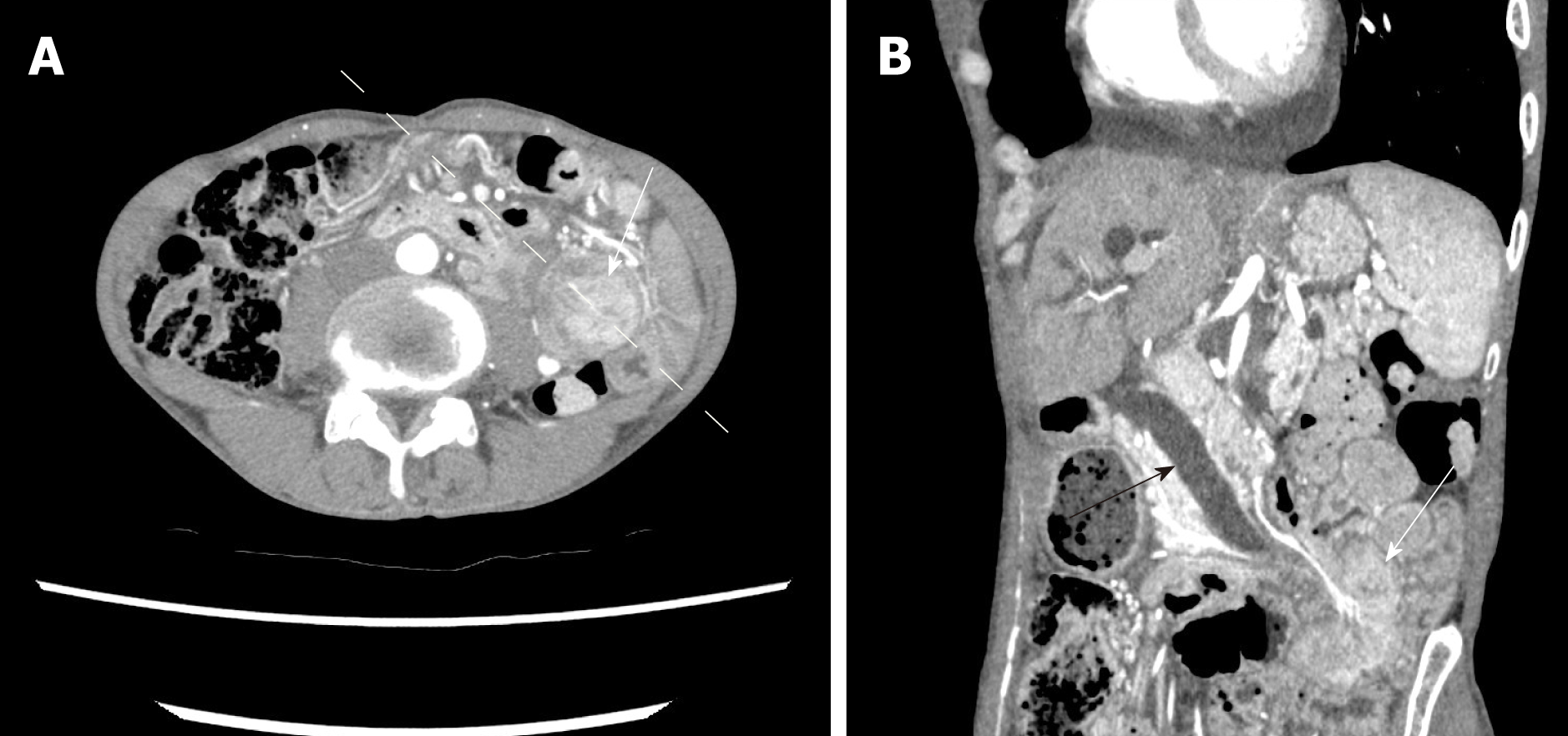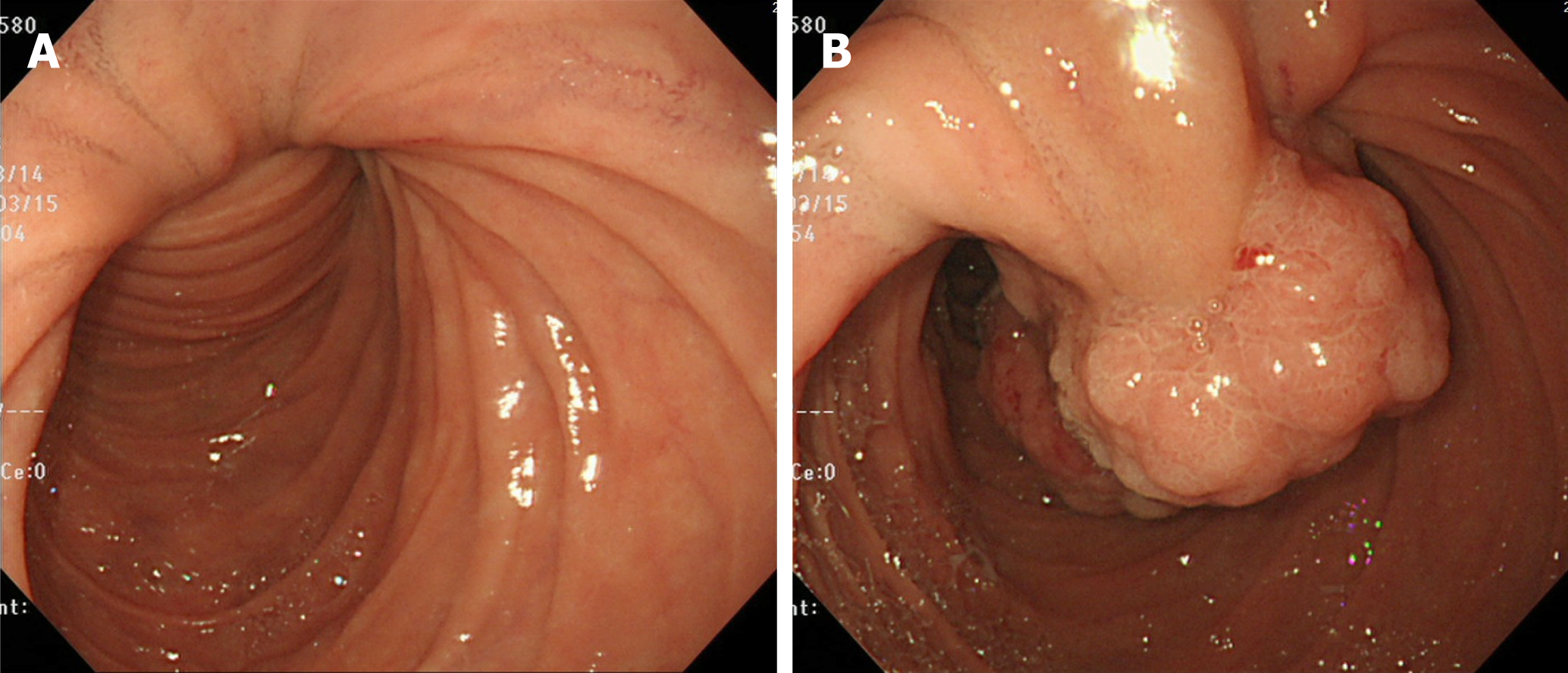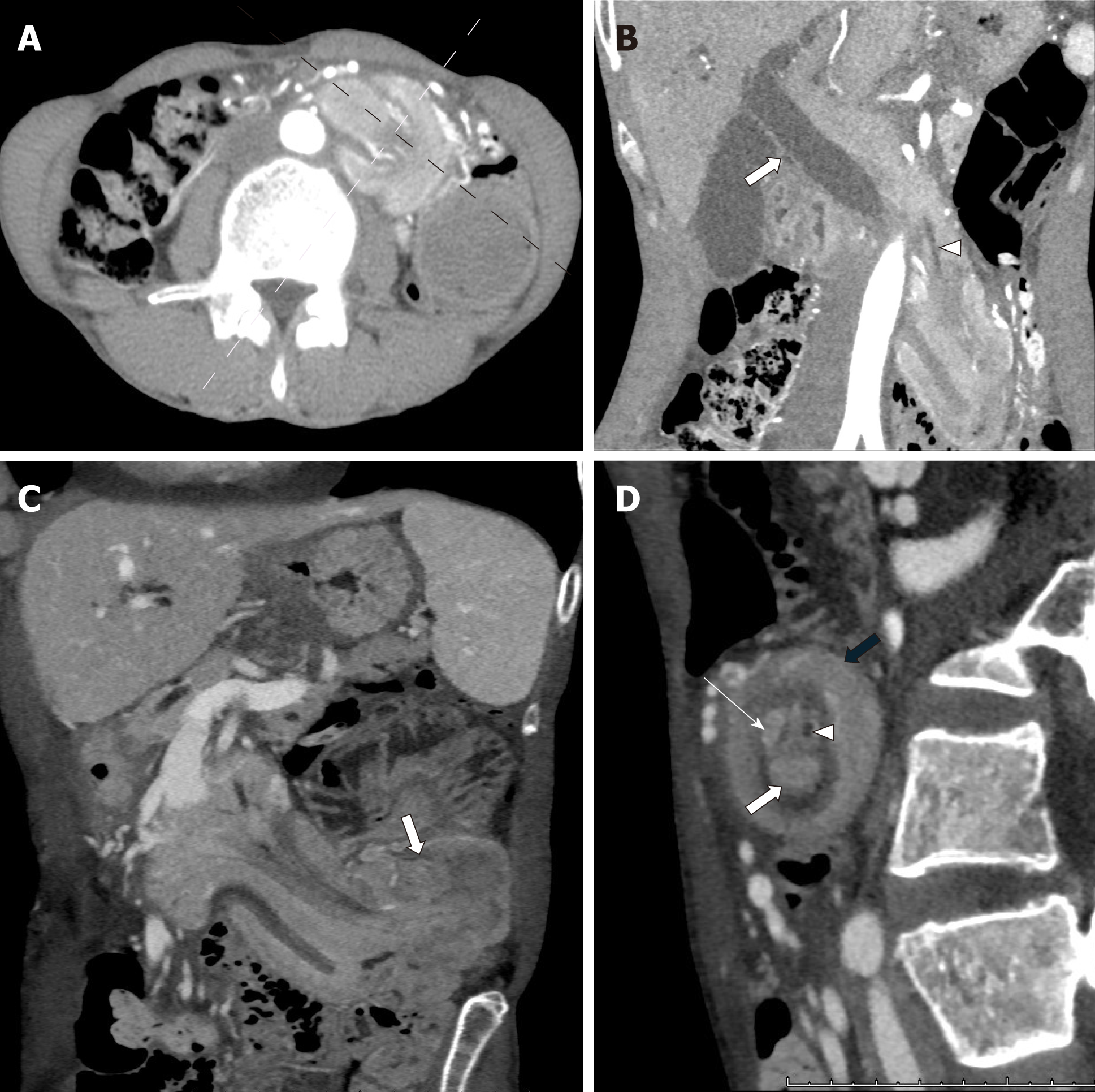Copyright
©The Author(s) 2019.
World J Clin Cases. Jul 26, 2019; 7(14): 1857-1864
Published online Jul 26, 2019. doi: 10.12998/wjcc.v7.i14.1857
Published online Jul 26, 2019. doi: 10.12998/wjcc.v7.i14.1857
Figure 1 Abdominal computed tomography on admission.
A: Axial computed tomography (CT) shows a 4.5 cm tumor at the proximal jejunum (white arrow); B: The CT beam is parallel to the longitudinal axis of the prolapsed tumor (dotted line in A). The whole structures surrounding the ampulla, including the common bile duct (black arrow) and the major pancreatic duct, deviate toward the left-lower direction. The tumor is located on the proximal jejunum (white arrow). The intussusception is not observable.
Figure 2 Drip infusion cholecystocholangiography-computed tomography.
This image shows dilatation of the common bile duct-intrahepatic bile duct and marked left-lower deviation of the common bile duct and ampulla.
Figure 3 Esophagogastroduodenoscopy.
A: The mucosa of the duodenum is elongated distally; B: A pedunculate papillary polyp with minor bleeding located on the second part of the duodenum is observable when the scope is pushed. The ampulla is not identified.
Figure 4 Follow-up abdominal computed tomography 3 d after admission.
A: Axial computed tomography (CT) shows duodenal intussusception; B: Coronal CT indicates further deviation toward the left-lower direction of the whole structures surrounding the ampulla, including the common bile duct (white arrow) and the major pancreatic duct (white arrowhead); C: The CT beam is parallel to the longitudinal axis of the intussusception (black dotted line in A). A tumor as the lead point (white arrow) and retroperitoneal structure, including the head of the pancreas and fat, invaginate beyond the duodenojejunal flexure to the jejunum; D: The CT beam is perpendicular to the longitudinal axis of the intussusception (white dotted line in A). The target sign has fatty elements, including the pancreatic parenchyma (white thin arrow) and pancreatic duct (white arrowhead), in addition to the intussusceptum (white thick arrow) and intussuscipiens (black thick arrow).
Figure 5 Operative findings.
Laparotomy reveals that the intraduodenal tumor prolapses beyond the duodenojejunal flexure to the proximal jejunum (white arrow). The intussusception is not observable.
Figure 6 Resected specimen and pathological examination.
A: This image shows a frontal view of the gross pancreaticoduodenectomy specimen; B: The pedunculate ampullary tumor is 4.5 cm × 3.8 cm × 2.6 cm in size. A sonde is passed through the biliary tract (white arrow); C: Histology confirms an ampullary tubulovillous adenoma with no dysplasia originating from the duodenal epithelium in the papilla of Vater. There is no evidence of intraductal extension or malignancy (hematoxylin and eosin staining, × 100).
- Citation: Hirata M, Shirakata Y, Yamanaka K. Duodenal intussusception secondary to ampullary adenoma: A case report. World J Clin Cases 2019; 7(14): 1857-1864
- URL: https://www.wjgnet.com/2307-8960/full/v7/i14/1857.htm
- DOI: https://dx.doi.org/10.12998/wjcc.v7.i14.1857














